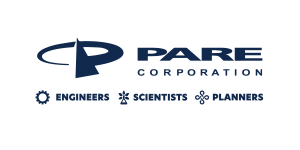Concrete Gravity Dam Failures
Contents
- Gravity Dam Failure Modes
- Dam Owner Academy
- Save this page as a printable Dam Owner's Fact Sheet [PDF]
This page will discuss failure modes for concrete gravity dams. Similar dam types, such as concrete buttress, arch, and slab, may have similar failure modes.
As the nation’s dams age, the potential for dam failures grows. These failures can cause immense property and environmental damage and threaten thousands of lives. Owners of dams and operating and maintenance personnel must be knowledgeable of the potential problems and failure modes that can lead to dam failure. If a problem is noted early enough, corrective measures can be implemented.
If there is any question as to the seriousness of an observation, an engineer experienced with dams should be contacted.
Gravity Dam Failure Modes
Gravity dam failures can be grouped into three general categories: sliding failures, overturning failures, and structural failures.
Sliding Gravity Dam Failure
When the dam slides over its foundation or one part of the dam slides over a part of itself, it is called a sliding failure. It occurs when the net horizontal forces acting on the gravity dam exceed the frictional resistance produced between the body of the dam and the foundation. The resistance may be due to friction alone, or it may be due to a combination of friction and shear strength, depending on how the dam was constructed. The ability of the dam to resist a sliding failure is commonly calculated by dividing the resistance to movement by the horizontal forces acting on the dam. Its value varies by loading condition, but generally, the result should vary between 1.3 and 1.5.
Overturning Gravity Dam Failure
Horizontal and vertical forces such as water pressure, wave pressure, silt pressure, ice pressure, and uplift pressure can act against a gravity dam, creating overturning force or rotation of the structure. The structure resists this rotation by having adequate weight. If the sum of all the forces acting on a dam acts, either through or outside of the downstream toe of the dam, the dam will rotate and overturn. While a structure can rotate about the toe, it is more likely that the overturning forces would increase stresses to such a level at the toe of the dam that structural failure would occur.
Structural Failure of Gravity Dams
Structural failure occurs when the tensile or compressive stresses in the dam exceed the strength of the materials that compose the dam. Masonry and concrete are weak in tension, so masonry and concrete gravity dams are designed to minimize tension in the structure. Steel bars, known as rebar, are incorporated within the concrete during construction to resist anticipated tensile forces. As the structure ages, rebar can corrode or deteriorate, and tensile forces can develop where rebar is not present or weakened. This, coupled with overturning forces, can redistribute stresses in the dam that could cause cracking. In severe cases of the redistribution of stresses, the dam can lose contact with the bottom foundation, increasing uplift forces on the dam. This can significantly increase loading at the toe of the dam leading to a compression failure. If the compressive stresses exceed the allowable stresses of the masonry or concrete, the materials may be crushed, leading to dam failure.
Dam Owner Academy
The Dam Owner Academy is a series of videos to educate and inform owners on all aspects of operating and maintaining a dam safely. The videos concisely present the critical basics of owner responsibilities and are available as a free resource for owners and those conducting owner outreach programs.
The "Learning From Dam Failures" video covers concrete gravity dam failures.


































